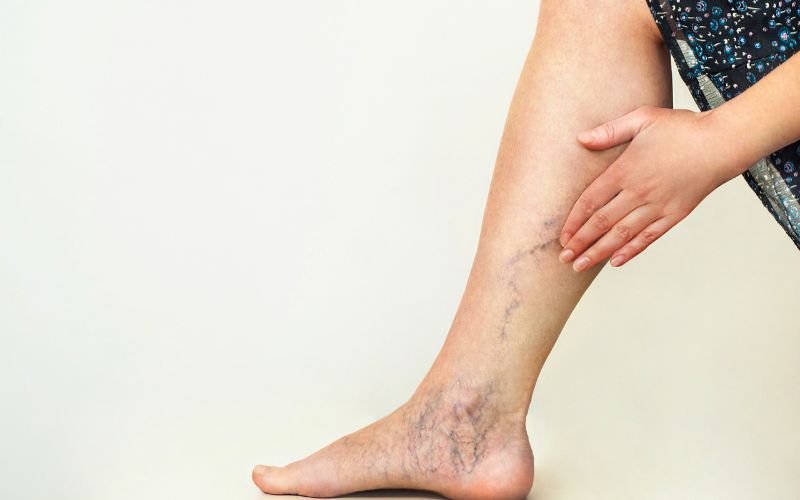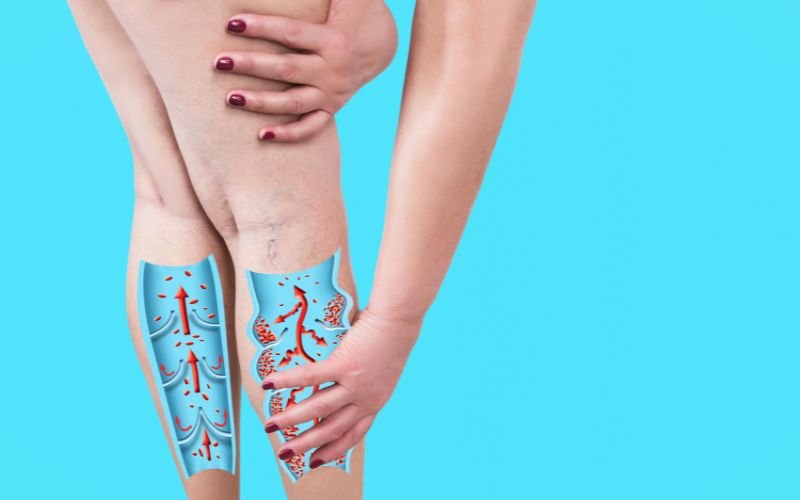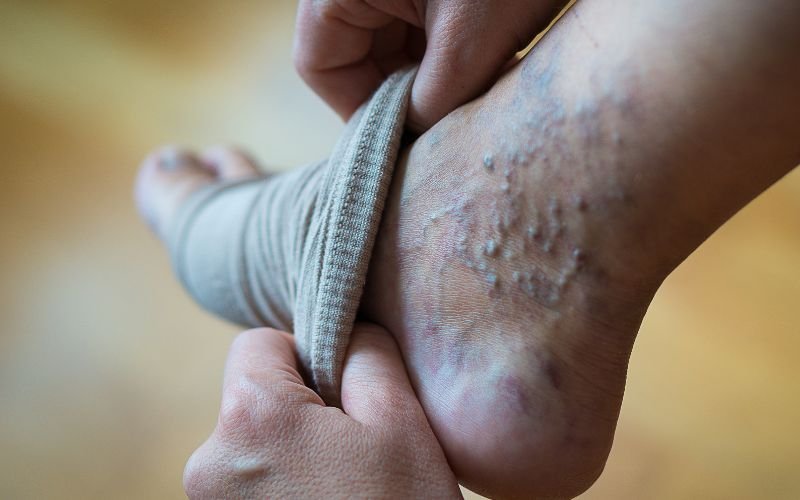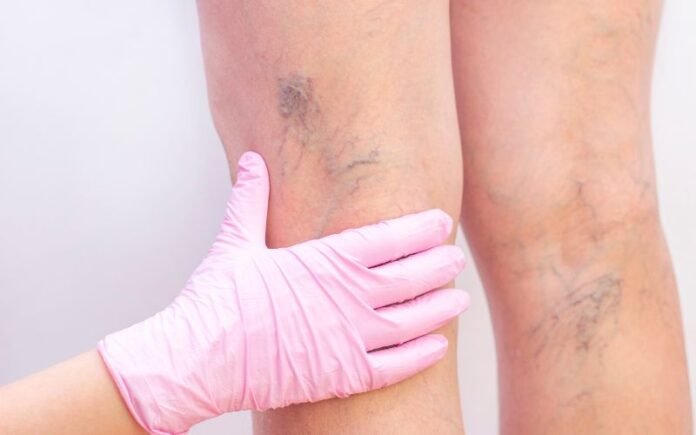Introduction: What are Varicose Veins?

Varicose veins are those that have enlarged, twisted, and turned blue or purple and are bulging under the skin. They mostly affect the legs but can occur anywhere on the body. While this is mainly a cosmetic problem for most people, it may be associated with pain, discomfort, and other complications. Once the causes and symptoms are known, different treatment options are available to arrest the condition. They are very important in dealing with this common condition.
Symptoms of Varicose Veins
Present with varicose veins Various symptoms can display the presence of varicose veins, such as evident bulging on the legs, pain, heavy or tired feeling in legs, cramps in calves, swelling in the ankle and feet area, itching around varicose veins, or skin discoloration and sores near the affected area.
Epidemiology and Predisposing Factors
This medical condition is already considered common; by estimation, millions of people all over the world suffer from this condition. When the following are present, there is an enhanced risk associated with this particular condition.
• Age: This is the most important risk factor, as ageing leads to a natural wear and tear of the veins.
• Gender: Most varicose veins are in women. Several factors, which may include hormonal influences, could be responsible.
• Family history: Those who have family with a history of this condition may get subjected to it.
• Pregnancy: Increased pressure on the veins when pregnant, combined with the relaxing action of progesterone on the vein walls, may contribute to their formation.
• Obesity: the excess weight puts undue pressure on the veins, thus it proliferates.
• Occupation: Long hours standing or sitting can cause varicose veins.
Complications of untreated Varicose veins
Varicose veins lead to pain and a loss of cosmetic value; they, however, carry some severe complications if not treated:
•Blood clots: the varicose veins may occasionally develop blood clots. This is life-threatening.
• Leg ulcers: Chronic inflammation and poor circulation brought about by varicose veins can lead to skin ulcers—open sores.
• Bleeding: Varicose veins sometimes bleed, mainly whenever the vein is injured or damaged.
Knowing why the problem develops: How do your veins become varicose?
The best prevention and treatment are always based on understanding exactly what is going wrong.
The role of a vein valve in a healthy vein
Veins: these are vessels that carry blood back to the heart. They contain one-way valves that prevent the back flow of blood. If the valves are damaged, the blood will collect in the veins, and the veins will enlarge to become varicose.
Venous Insufficiency: Blood Flow Disruption
Venous insufficiency is the circumstance in which the veins no longer return blood to the heart due to the dilation of veins because of the increased pressure.

Causes of Venous Insufficiency
Venous insufficiency and varicose veins result from several conditions. They are;
Age and genetics
This has already been mentioned in the introduction, but age and genetic history of an individual are significant influential factor for the prominence of varicose veins, as the natural aging of the body weakens the veins’ walls and valve mechanisms, and the genetics can make individuals susceptible to the problem otherwise.
Pregnancy and Hormonal Changes
During pregnancy, the hormonal changes in the female body exaggerate the pressure on the veins, making them dilate under pressure. The valves of the veins can be affected by such changes, leading to varicose veins.
Obesity and Lifestyle choices
Excess weight generates creates extra pressure on the veins, which in turn can be more prone to damage. Prolonged hours of standing or sitting still and an inactive lifestyle also worsen venous insufficiency.
Watch Out: How to Identify Varicose Veins
Early identification can help you avoid complications due to varicose veins. Make a note of the following easily recognizable symptoms:. If you notice any of these, you should consult a doctor immediately.
- Visual Appearance: Twisted, Bulging Veins
The presence of large, twisted veins on the legs can be seen through the skin. They might appear blue, purple, or even red. These are the common symptoms.
- Leg Pain and Aching
Many individuals with varicose veins experience aching, heaviness, or tiredness in their legs, particularly after an extended period of standing or sitting.
- Aching, Heaviness, and Fatigue
A peculiar sensation of heaviness or tiredness in the legs, with aching pain, is the definitional characteristic of varicose veins.
- Skin Changes and Itching
Varicose veins occasionally might be responsible for skin condition changes. These might occur in the region where the veins are affected in terms of discoloration or itching.
- Restlessness and Night Cramps
In severe conditions, varicose veins can also lead to restlessness and night cramps in the legs.
What to Do: Prevent Varicose Veins
Although it’s not always possible to completely prevent varicose veins, embracing healthy lifestyle habits can go a long way toward ward off your risk.
Maintaining a Healthy Weight
- Excess pounds add to the pressure on the veins, so losing weight reduces pressure and prevents them from forming in the first place.
- Regular Exercise and Physical Activity. It enhances the circulation of blood and reinforces the muscles in the legs, thus lowering the risk of getting varicose veins. Regular exercises include walking, swimming, and cycling.
- Compression Stockings: Your Daily Ally. Wearing compression stockings improves blood flow and helps to diminish swelling of legs. They exert mild pressure on the veins, which encourages blood to pass quickly.
- Legs Elevation During Rest. Elevate the legs whenever possible over the heart; this helps to decrease the force that blood exerts on the veins, hence making its flow occur more easily.
- High Heels and Tight Fittings. Clothing that is too tight might interfere with blood flow, while high heels increase the pressure upon the veins. One should, therefore, wear loose clothing and shoes which are low-heeled.
Treatment Options for Established Varicose Veins
In the event that you already have varicose veins, there are some treatments available that can be recommended, as they may help relieve symptoms of these veins and significantly improve your quality of life.
- Treatment through Injection for Smaller Veins: Sclerotherapy
Sclerotherapy— is a process characterized by injecting the varicose vein to cause it to collapse and finally vanish. It is strictly orientated on the insignificant veins.
- Laser Treatment: For Spider Veins
Laser treatment, on the other hand, targets the light’s focused and condensed beams to heat and destroy spider veins, which are smaller, often red veins commonly accompanying varicose veins.
- Radiofrequency Ablation: For Coming Down Larger Veins
Radiofrequency ablation: A small catheter is inserted into the varicose vein, and then heat energy is delivered to close the vein. The procedure is very beneficial for larger veins.
- Phlebectomy: Eliminating Varicose Veins via Small Cuts
Phlebectomy is a surgical method in which varicose veins are removed through small cuts. It is typically employed for large veins that have shown no improvement with other types of therapies.
- Vein Stripping or Ligation: Surgery
Vein stripping and ligation are older surgical approaches that today are used much less commonly. Both procedures physically eliminate the varicose vein as a conduit by removing the complete vein or tying it off to stop blood flow into the vein.
Living Well with Varicose Veins: Tips for Managing Discomfort
Even if you get treated, varicose veins sometimes continue to remind you of their presence. Here’s how to keep yourself comfortable and looking and feeling your best.
Lifestyle and Home remedies
Continue to eat healthily, exercise regularly, and watch weight—this will all contribute to good vein health.
Compression and Exercise
Compression stockings, when used along with low-impact exercises like walking or swimming, can alleviate the symptoms to some extent and aid in efficient blood supply.
Weight control and reducing inflammation
Optimal weight and decreased inflammation levels by dietary and lifestyle modification are other factors that contribute to good vein health.
Early Diagnosis and Treatment of Associated Aetiology
If you have other conditions like diabetes or heart disease, proper management of such diseases can, in fact, help you avoid some of the complications that can be brought about by varicose veins.
When to See a Doctor: Addressing Concerns and Seeking Help
Treatment of varicose veins is, most of the time, performed for cosmetic purposes. You should, therefore, only require seeing your doctor if you develop one of the following:
• Severe pain or swelling
• Skin changes or ulcers
• Bleeding from the varicose veins
• Heaviness, fatigue, itching, and swelling of the leg that make it impossible to walk or even stand
Such a health professional can examine you and suggest some ways to treat you and alleviate your concerns.
Where to Seek a Vein Specialist: Vascular Surgeons or Phlebologists
If you require complicated treatments for varicose veins, you might want to address your concerns with a vascular surgeon or phlebologist. These doctors have special training to treat vein disorders.
Diagnosis and Treatment Planning
Your physician will examine you physically and may recommend some further tests to be undertaken, which may include ultrasound or Doppler studies, so that he can adequately assess the severity of your varicose veins. Based on this diagnosis, he will chart an individualized treatment plan.
Long-Term Management and Follow-up Care
Regular follow-up with your doctor is necessary to monitor your condition and identify any changes or complications that might have occurred.
How Cabin Crew Are Affected by Varicose Veins
Cabin Crew and Varicose Veins: A Flight Attendant’s Challenge
Cabin crew members are most likely to suffer from this condition due to the nature of the job. The effect of having to stand for prolonged periods, usually on a busy aircraft where there is always limited space to stretch one’s legs, is compounded by changes in cabin pressure that add further strain to the veins in the legs.
- Prolonged Standing: Cabin crew members stand for long periods, which can raise the pressure within the veins of the lower extremities.
- Changes in Cabin Pressure: Changes in cabin pressure during flight cause an effect on blood circulation and can contribute to the formation of varicose veins.
- Shift Work: The sleep disruption caused by shift work changes the normal circadian rhythm of the body, affecting circulation and making it prone to vein disorders.
- Hormonal Factors: Female cabin crew members may be at special risk due to hormonal changes.
Varicose Vein Prevention and Management in Cabin Crew

- Compression Stockings: Graduated compression stockings are found to reduce the risk of varicosities and also alleviate symptoms.
- Regular Exercise: Walk regularly, swim or practice yoga to improve circulation and enhance the strength of limb muscles.
- Hydration: Keeping the body well-hydrated helps to maintain blood volume so that it does not thicken. Thickening of the blood puts an added burden on the veins.
- Elevate Legs: A person can elevate their legs whenever possible, especially during rest periods. Elevation helps in blood circulation and reduces swelling of the leg.
- Weight Management: Keeping at a healthy weight can help decrease pressure on the veins.
- Avoid Tight Clothing: Wear loose clothing that allows for good circulation.
- Regular Checkups: Schedule regular checkups with a specialized healthcare provider to address any vein-related problems at an early stage.
Additional Tips for Cabin Crew
In-Flight Exercises: Do some leg exercises and ankle rotations while you are on board to keep the blood flowing.
- Footrests: The cabin crew can avail of the footrest available during flights. This keeps the legs at an elevation and relieves pressure from the veins.
- Hydrating Infusions: You may further have lemon or cucumber infusions for more hydration.
These preventive measures, combined with professional advice, can very effectively minimize the risk of acquiring varicose veins and, indeed, show positive control over their existing conditions in many cabin crew members.
Conclusion
Take Control of Your Leg Health
Although varicose veins are in the category of nagging conditions, it can be rather well controlled if you have the right understanding. By adopting good life habits, ensuring early treatment, and engaging thoroughly with your healthcare provider, you can take charge of your leg health and live a more comfortable life with improved well-being.


